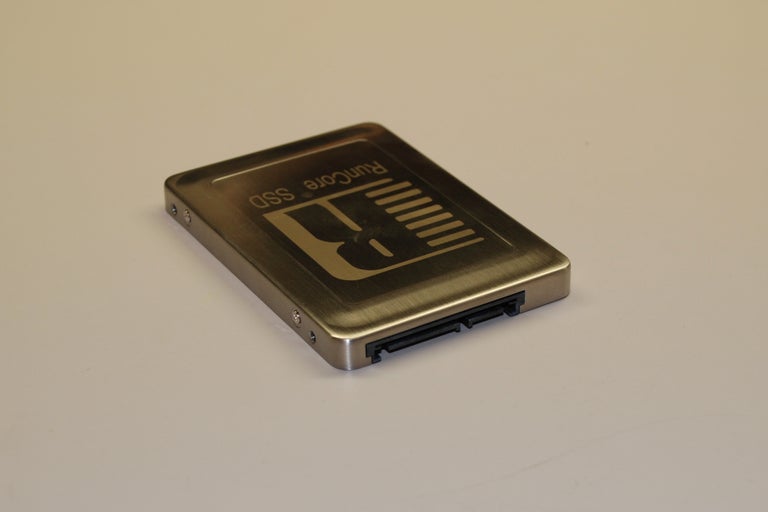I ran into RunCore the first time during CES 2012 and the Pro V Max SSD, introduced at the show, is one of the company's first standard solid-state drives for the U.S. market.
The Good
The Bad
The Bottom Line
If the first step is always the hardest, the biggest challenge of a drive is its pricing. At around $2 per gigabyte, the Pro V Max is one of the most expensive SSDs on the market, while offering similar performance to many others I have reviewed.
To slightly make up for this, the drive comes in very sleek aluminum casing and offers top boot times and very fast application performance. It supports SATA 3 and will work in all applications where a regular 2.5-inch standard SATA drive is used.
To be fair, the new drive isn't the most expensive on the market and RunCore said that consumers will find its street price to be noticeably lower than the current suggested retail pricing, which is about $450 for the 240GB version, for example. Until then, you might also want to check out other SATA 3-based SSDs that offer similar performance, if not better, for lower cost, such as the Samsung 830 series, or any of the others on this list.
Design and features
| Drive type | Internal drive |
| Connector options | SATA 3 (6Gbps), SATA 2, SATA |
| Available capacities | 60GB,120GB, 240GB, 480GB |
| Product dimensions | 9-mm thick, 2.5-inch standard |
| Capacity of test unit | 240GB |
| OSes supported | Windows, Mac, Linux |
Apart from the sturdy aluminum casing, the RunCore Pro V Max is very much a regular SATA 3 SSD, powered by the almost year-old SandForce SF-2281 controller and using asynchronous flash memory for its data storage. The drive comes in the 2.5-inch, 9mm-thick SATA standard and will work with SATA (1.5 Gpbs), SATA 2 (3Gbps), and SATA 3 (6Gbps). To get its top performance, you should use it with a computer that supports SATA 3, however.
According to RunCore, the drive supports RAID and TRIM and has an MTBF rating of 2 million hours, longer than many other SSDs. The drive's static and dynamic wear-leveling algorithms help increase its life span. Wear leveling is a technology that makes sure all flash cells share the same amount of program/erase cycles to fight against the finite writing attribute of flash memory by spreading out the wear evenly.
Like all SSDs, the Pro V Max can handle shocks and uses much less energy than a traditional hard drive. It worked with all operating systems I tried it with, including Windows, Mac OS, and Linux.
Cost per gigabyte
On average, all capacities of the Pro V Max cost around $2 per gigabyte--except for the $159, 60GB version, which is about $2.65 per gig--making it one of the more expensive SSDs on the market. The OCZ Octane, for example, costs around $1.5 per gigabyte and even the top-of-the-line Samsung 830 series costs just around $1.7 per gigabyte. To be fair, that's comparing the suggested retail price of the Pro V Max with the street prices of other drives. RunCore insists that the Pro V Max's street price will soon be lowered, which should bring it in line with other drives. It's my guess that since RunCore is also an OEM provider of SSDs, it doesn't want to compete with its partners, for now.
Performance
The Pro V Max did well in my testing, taking just 11 seconds to boot up its host computer, the shortest boot time I've seen, though by just 1 second. Note that most SSDs help the host computer take a very short time to start up. The Pro V Max provides a typical SSD shutdown time of around 6 seconds.
While it's hard to put this in numbers, the drive also boosts application performance a great deal. This means apps that would normally take a while to load from a hard drive, such as big games, now take a much shorter time to load. StarCraft 2, which is by the way my most favorite part of the testing, took about 20 seconds less to load from the Pro V Max than when the test machine was using a hard drive. Other applications, such as Word, Excel, and Firefox, popped up instantly. The computer would also resume from sleep mode almost instantly. Overall, the RunCore Pro V Max offered a much better computing experience than a hard drive.
Where the drive didn't impress very much was its copy test, which is by the way not the strength of SSDs. Generally speaking, SSDs are designed for random access and not sequential access. When used as a secondary drive, the Pro V Max managed an average of around 187MBps, which put it right in the middle of the charts. When used as the main hard drive hosting the operating system--the most popular use of an SSD--the Pro V Max, now having to write and read at the same time, dropped to around 93MBps, which is again average for SATA 3-based SSDs.
(Shorter bars indicate better performance)
| Shutdown | Boot time |
(Longer bars indicate better performance)
| As secondary drive | As OS drive |
Service and support
RunCore backs the Pro V Max with a three-year warranty, which is not as good as the five years offered by some other companies, but not so bad, either. On RunCore's Web site there's currently no information on the Pro V Max since this is a new drive, but the company says information will be available soon.
Conclusion
The RunCore Pro V Max is a very good replacement drive for your computer, be it a desktop or a laptop. Its high pricing, however, makes it much less appealing than it could be.



